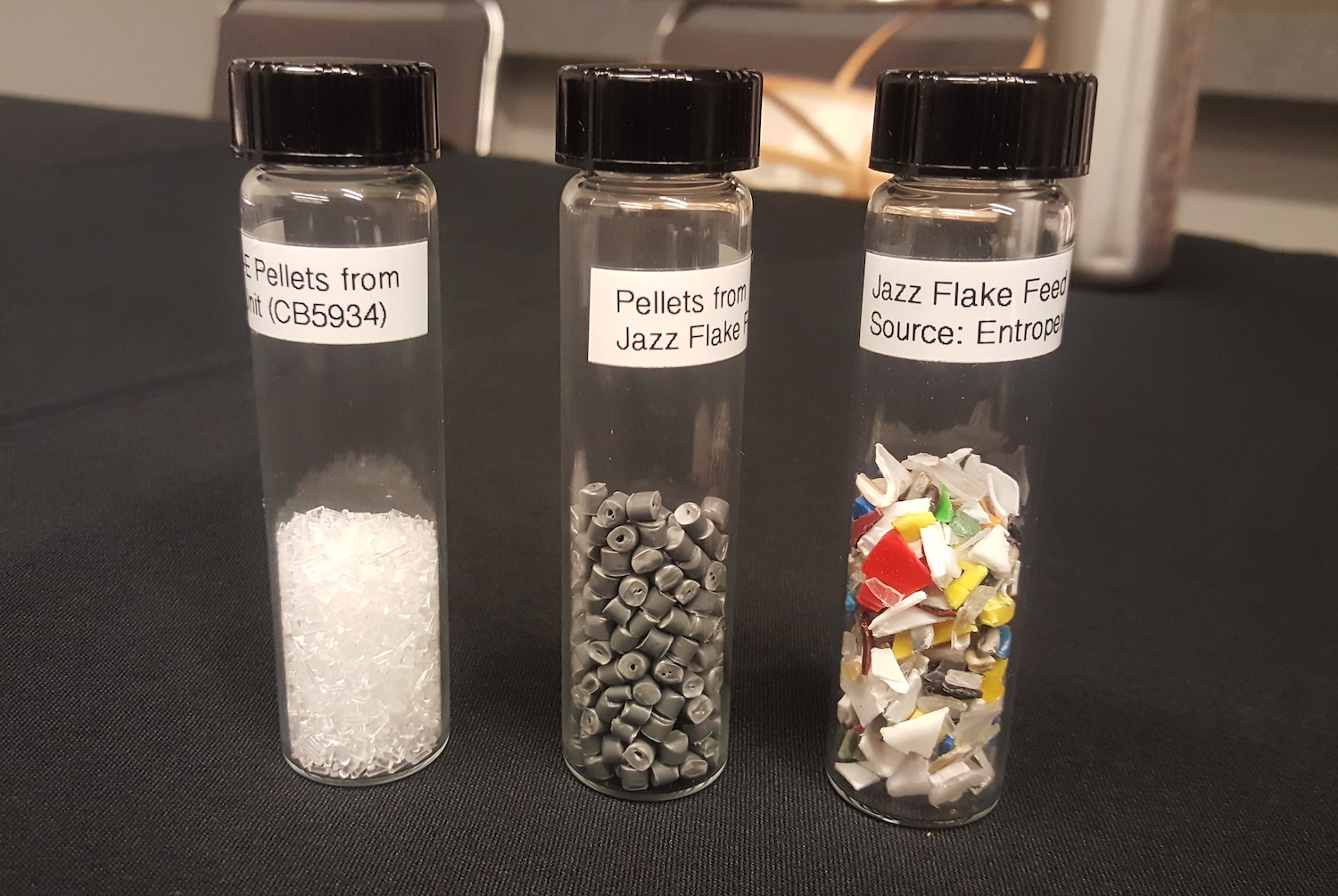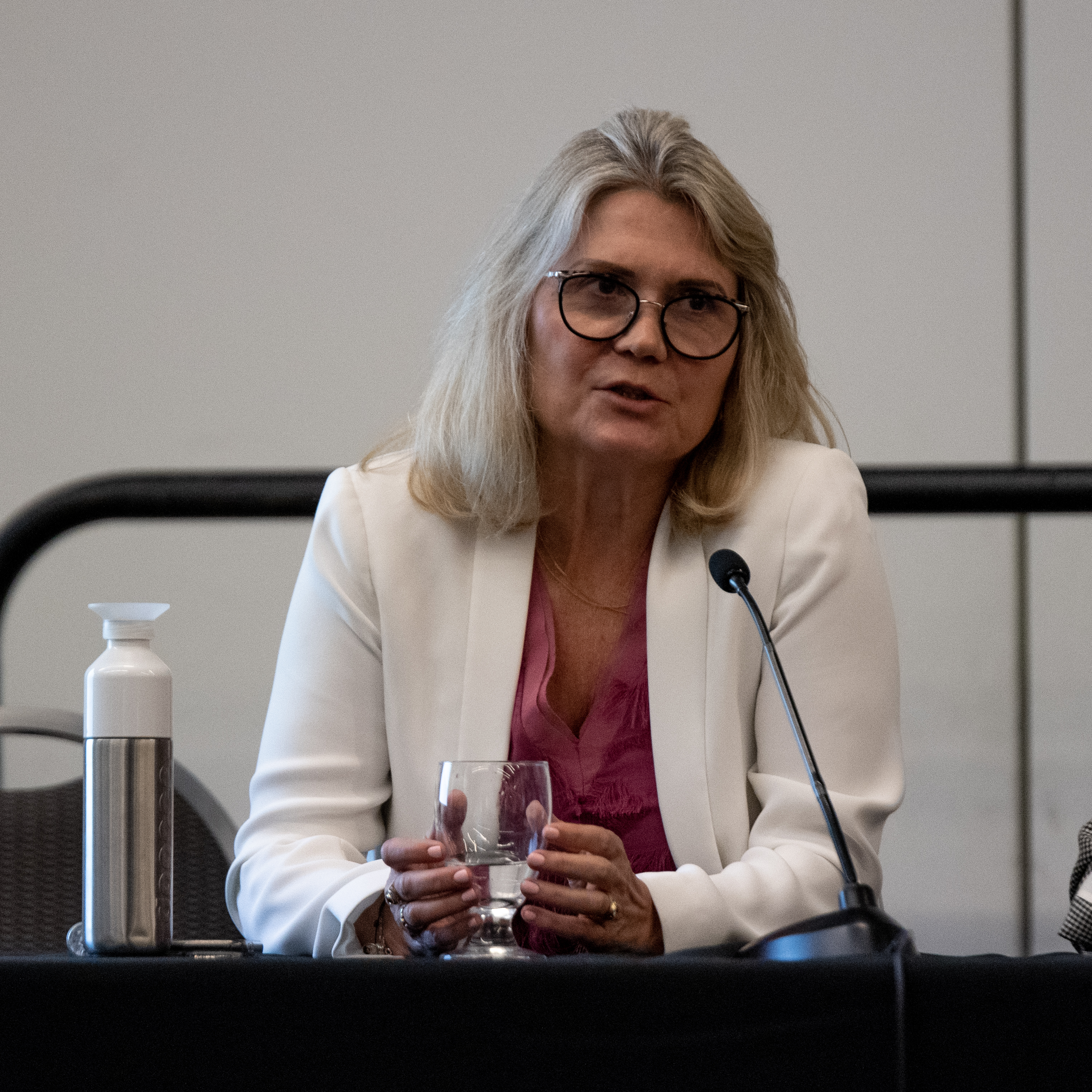From Planning to Practice: How To Make Inclusion a Part of Your Corporate Culture


This article series is sponsored by DXC Technology and produced by the TriplePundit editorial team.
Over the past two months, we've been taking a closer look at neurodiversity in the workplace. It's a fairly unexplored topic within the broader diversity and inclusion conversation, and many may not even recognize the term. Put simply: Neurodiversity refers to respecting neurological differences—such as autism, dyslexia, clinical anxiety and depression, and post-traumatic stress disorder—the same way we do other differences.
So far, we've heard from experts about how embracing neurodiversity—and, specifically, employing people on the autism spectrum—can help companies drive top talent forward. And we've covered how to create pilot programs for hiring people on the spectrum. But in many ways, that's the easy part.
The hard work begins after people are recruited, hired and on-boarded. How can companies make their workplaces and corporate cultures welcoming for neurodiverse people? How can they leverage the strengths of these employees and help them feel supported? And how can they foster positive relationships among their teams of all backgrounds?
Answering these questions may bring about a hard reckoning for business leaders and force them to take a closer look at how inclusive and supportive their company cultures really are—for everyone, not only for neurodiverse people.
"When you look at efforts to build more inclusive employment practices—for example, around autistic people and their employment—it forces you to revisit what your organization is already doing," said Charmine Hartel, professor of occupational health and industrial and organizational psychology at the University of Queensland Business School. "Because you’re not just looking to be inclusive of [neurodiverse people]—you’re looking to build workplaces that are inclusive and fair for everyone."
We spoke with Hartel and her colleague Anna Krzeminska, an associate professor in the Centre for Workforce Futures at Macquarie University in Australia, to find out how companies can ask the tough questions—and absorb the tough answers—as they seek to build cultures around inclusion.

Neurodiversity as a catalyst for cultural change
A growing number of top companies, including SAP and JPMorgan Chase, have launched specialized programs to employ people on the autism spectrum. Their case studies offer insight into how these programs work—and the ways they illuminate culture challenges within a company.
For example, through the Dandelion Program, DXC Technology has been working to increase technology employment opportunities for people on the autism spectrum since 2014. After 12 months, program leaders already spotted several challenges: Some managers were fearful of having performance discussions with neurodiverse hires, for example, and teams weren't integrating as they'd hoped. In response, the company connected program participants with mentors, provided new training for managers, and explored new ways for diverse teams to engage with one another.
This type of knowledge-building and adjustment is common when addressing neurodiversity in the workplace—and it makes the case for how these programs can strengthen corporate culture overall, Hartel told us. Take, for example, the time-honored interview. "Researchers have shown for many years now that the interview is a highly flawed method for hiring people," said Hartel, who also serves as co-director of the Queensland Neurodiversity Hub. "Yet almost every organization wants to do it, because they somehow think they have an innate ability to watch someone and figure out how they're going to perform in the workplace."
When looking to hire neurodiverse people, it's a clear first step to revisit the interview process. "The traditional interview is very problematic for autistic individuals," Hartel said. But moving away from the interview "is good for everyone," she explained, "because it’s really a horrible method for selecting people."

To create inclusive cultures, we need to revisit how we work
"Two human needs are universal—we have the need to both belong and also to be recognized as individuals," Hartel said. "That's just fundamental, so we need to create organizations that are inclusive—as in, people feel they belong, but also that their identities and who they are as individuals is valued and appreciated."
By and large, business still has trouble with this. Take, for example, a recent study of black female Harvard MBAs who went on become senior executives. Even after reaching the top of the proverbial ladder, many said they struggled to “be themselves” at work and felt “on display” in their workplaces.
As shown in research on toxic corporate cultures, this type of unrest simmers beneath the surface—but it often goes unnoticed by those with the power to do something about it. "We need to start understanding that workplaces are responsible for the human wellbeing of their employees," Krzeminska told us. "They can create social context that helps people flourish, or they can create social context that causes a great deal of damage."
In this sense, neurodiversity programming can illuminate culture problems that a company already has: By taking a second look at how it supports neurodiverse hires, how managers interact with them and how they integrate into teams, it becomes clear what the company could do better to support each of its employees—not only those in the program, Hartel said. "What's brilliant about [neurodiversity employment] is that it gets us to think about the ways we've held on to the traditional models of how to recruit, hire and operate," she told us.
Think of it this way: As we've profiled in this series, many people on the autism spectrum have sensitivity to bright lights or sound, so companies often make small shifts in their workspaces to accommodate. How did managers know to dim the lights or use headphones? Because they asked new hires on the autism spectrum what they needed. But what if those managers took the time to ask each of their employees what would make them happier and more fulfilled at work? This type of question can certainly rise through employing a new group like those on the autism spectrum, but if companies tackle it head on, it can shift an entire culture, Krzeminska said.
"We can design work," she told us. "We should be thinking about the talent that we have and creating work that fits to the individual. And that's good for everyone, because most of us have something in our work that we hate doing but we're stuck with because that's what the 'role' is. When you look at worldwide work engagement surveys and you see 18 to 20 percent engagement levels, it says that no one feels they have the perfect job."

It's time to get real about corporate culture
Asking your employees about their experience with the company takes guts, but it's only the beginning. You also have to be sure they feel comfortable enough to be frank with you, Hartel said. "You have to know how to have conversations around people's wellbeing and how to create trust," she told us. "Otherwise, there’s the risk that employees will not tell you how they feel or what they need, out of fear of being perceived as weak or ineffective."
Imagine, for example, that your company just put out a flashy press release announcing your new paid leave policy. That's great, but it doesn't mean much if your nose-to-the-grindstone culture makes employees reticent to take advantage of it. When they encounter the inevitable difficulties of life, they're more likely to push through rather than ask for help, causing them to burn out and disengage.
When working on a hiring pilot—and actively gathering data and making adjustments—managers are more likely to see this happen in real time. But similar small shifts in the workplace have a universal potential to improve wellbeing at work. "It is not true that organizations spend more money on accommodations for disabled people than on their so-called ‘non-disabled’ employees," Krzeminska said. "Everyone needs some level of adaptation to be able to perform at their best. It’s just about what kind of accommodation that is, and you need to find that out from the individual employee."
What comes out of those conversations will be different for every company, the professors told us, but sitting down at the table is the only clear path. "We can’t give you ‘three easy ways’ to be inclusive, because it’s not that easy," Hartel concluded. "There are foundational principles, but each organization has to ask themselves the difficult questions of what they need to be doing [to support their employees]."
Image credits: Christina Morillo, Marten Bjork, Jopwell x PGA, mentatdgt, Jose Aljovin and Perry Grone
Meet the Young Minds Solving the Climate Crisis


Yes, the world is in the midst of a climate crisis, but EDF is showcasing these young leaders who offer us optimism.
As a Cruise Director for an expedition travel company in the Arctic and Antarctic, Meghan Kelly often found herself in conversations with locals about the receding coastline. She heard how decreasing sea ice is diminishing traditional hunting grounds, along with the passages between one community and the next in the Arctic. For the families who have been there for generations, surviving means adapting to a warmer climate.
To many of us, these remote locations may seem far away. But stories like this are happening much closer to home. Climate change is altering, and in some cases destroying, the environments we grew up in.
It’s easy to feel hopeless when hearing these stories. But here’s one reason why I’m optimistic about the future of our planet.
Last week, I met 120 graduate students, from across the U.S. and China who are dedicating their careers to solving the climate crisis. I was blown away by the high-caliber talent I saw. This group, members of the 2019 EDF Climate Corps fellowship, are using their unique personal experiences and educational backgrounds to tackle climate change in new, innovative ways.
Let me introduce you to some these talented emerging leaders, and I hope that you, too, will find hope in knowing that the future of our planet lies in their hands.
Yalun Feng
Trying to visualize the environmental impact that millions of people can have on our planet might seem abstract. But for Yalun Feng, growing up in Wuhan – one of the most populous cities in central China – meant seeing waste and pollution on a daily basis. In September of 2016, Yalun co-founded a social enterprise, Leaves Plates Company, that sells biodegradable plates and flatware made from leaves, a South Asian tradition.
The plates are sold to restaurants, food trucks and university dining services in the U.S. as a solution to reducing plastic use. The products are 100% biodegradable, extremely sturdy and can be manufactured with a carbon footprint that’s much lower than traditional plastic products. Beyond having a reduced impact on the environment, the company creates jobs, providing for people – especially women – in destitute areas with disposable incomes and greater economic independence.
Anneliese Gegenheimer
Anneliese Gegenheimer spent seven years with IBM, first in the company’s Global Business Services, then in IBM’s Watson Financial Service department. She created learning programs to help advance the company’s application of Artificial Intelligence, and implemented processes for optimizing manufacturing supply chains. But for five of those seven years, Anneliese was also acting as founder and director of the Chicago Student Invention Convention – a student invention program that empowers students K-8 to creatively solve problems.
Anneliese formed partnerships, developed teacher trainings and curriculums, recruited volunteers and mentors, and organized a city-wide competition. In those five years, the program served over 8,000 students and has since become integrated into Chicago’s STEM programs. The flexible curriculum gives students the opportunity to turn innovative ideas into innovative products, like ChargeAir – a portable wind turbine that can be placed on an electric car to generate power as the car drives.
Robert Ddamulira
Robert Ddamulira spent the last nine years working for the World Wide Fund for Nature (WWF), based in Uganda. He coordinated with 11 WWF offices across the continent to solve a range of socio-economic, environmental and energy issues facing the population.
Using his background in energy – specifically oil, hydropower, bioenergy and solar – Robert designed and led an 11-country rights-based sustainable energy program. The program helped get countries like Uganda, Kenya, Zambia, Madagascar, DRC and Tanzania to work together to enable 1.2 million people to get basic access to modern energy solutions for services like lighting and cooking. He also influenced national, regional and international energy policy around modern, energy access, increasing the use of renewable energy and reducing the environmental impact of large scale energy developments, such as hydropower and oil and gas.
Yalun, Anneliese, Robert, Meghan and the rest of their generation make me hopeful about the future of our planet.
Previously posted on EDF's blog and the 3BL Media newsroom.
Image credit: Jesse Orrico/Unsplash
The Recycling Dilemma: If Not China, Who?


It's been quite the roller coast for the recycling industry. In January 2018, China severely restricted the import of recyclables in an effort to crack down on pollution. In particular, the ban targeted mixed paper and mixed plastics, limiting how much contamination can be present in recyclable materials. For example, imagine trying to recover plastic from a dirty diaper versus a used plastic berry container.
Major exporters of this type of scrap, namely the United States, nearly went into panic mode. Americans make up roughly 5 percent of the world’s population, but according to various studies, generate nearly 40 percent of the world’s total waste. According to the U.S. EPA, earlier this decade, the average American discarded as much as 4.4 pounds of trash a day - or four-fifths of a ton (over 1600 pounds).
China says no to being the globe's recycling bin
Previously, from 2005 to 2015, China imported nearly half of all plastic scrap globally. Figures from the United Nations Comtrade Database show that in 2015 alone, exports of all scrap commodities from reporting countries approached 180 million metric tons valued at more than $86 billion.
Scrap can be integrated into manufacturing supply chains at mass scale and with significant cost savings. While the U.S. was the largest exporter of recycled commodities in the world, and China was the world’s dominant consumer of scrap commodities, change is happening.
When China’s ban on scrap imports began leading to backlogged materials and stockpiling in the U.S., municipalities started hitting the brakes on recycling programs. Yet in a 180-degree turn of events, Chinese manufacturers that require wastepaper and flattened bottles for their production needs started investing in U.S. scrap recycling opportunities.
A ban generates new opportunities
ND Paper LLC, a wholly-owned subsidiary of Hong Kong-based Nine Dragons Paper Limited, invested $500 million over the past year to buy and expand or restart production at paper mills in Maine, Wisconsin and West Virginia. As one of the world’s largest producers of cardboard boxes, Nine Dragons relies upon mass quantities of scrap to be turned into pulp to make boxes.
ND Paper also completed the acquisition of a recycled pulp mill in West Virginia. The mill will be used to increase the organization’s capacity to manufacture and distribute recycled pulp, which is used in a wide range of products, from packaging to tissue paper.
Domestic projects are coming online too. Several American owned and operated paper mills, plastic recycling plants and materials recovery facilities (MRFs) are reevaluating operations and policies in order to adapt to this major industry shift.
In California, five plastics recycling projects will receive millions in state funding to expand efforts. From a food and agriculture packaging producer who will process an additional 2,000 tons of PP and PE per year to a reclaimer who will produce decontaminated, food-grade HDPE from post-consumer packaging and agricultural film, these efforts are keeping plastic out of landfills and finding useful solutions for recycled plastic materials.
Memo to the world: mind, and mine, your own recyclables
While there is skepticism such efforts aren’t grand enough, if countries like the U.S. are thwarted from selling trash to other nations to process it, then processing efforts must be beefed up domestically and new solutions will need to be developed - or, at some point similar to China, the U.S. will need to stop accumulating scrap.
In addition, as other nations like Malaysia replicate China’s ban and send back contaminated scrap materials, a clear message is being sent: nations are working to provide their citizens a clean environment to live in.
For the U.S., this means shipping millions of pounds of waste to other nations to process it may longer be an option. As the U.S. and other countries continue to explore scrap processing operations, questions of proper management, environmental consequences and companies that use the most of these recycled materials should be considered. If the trend continues that exporting recovered waste will become increasingly more difficult, nations need to build up domestic infrastructure in order do everything they can to reduce waste.
Image credit: Pixabay
'Caste System' at Google Shows What's Wrong with the Gig Economy


Recent leaks to media outlets have helped publicize Google’s alleged “shadow staffing” practices. In layperson’s terms: The company has been hiring more temporary and contract workers than full-time employees. Continued accusations from workers, coupled with Google’s struggles managing this controversy, together show the long-term risks posed by the gig economy—one in which many younger workers have long found themselves mired.
Google exemplifies the ‘gig economy’
Late last month, the New York Times interviewed anonymous sources (due to these employees’ nondisclosure agreements) and concluded that Google had 102,000 full-time employed staff versus 121,000 temporary and contract workers around the world.
Within the company, workers have organized walkouts and demanded fairer work conditions for temporary and contract workers. The person or group behind the Twitter handle Google Walkout For Real Change has alleged that Google, akin to how critics say the ride-hailing companies Uber and Lyft operate, increasingly relies more on temp and contract workers, who do not receive the same benefits as their full-time counterparts.
A caste system for tech workers?
Pradeep Chauhan, the owner of the contracting job search firm OnContracting, told the Times this perceived preference for contract workers over full-timers has been “creating a caste system inside companies.”
Google has not verified or commented on the claim that 54 percent of its workforce is contractors and temp workers. The company has not released an official response to these accusations but did announce it will implement workplace changes for its temporary and contract staff. Google said it will now require that the outside companies employing the workers provide them with comprehensive health care, a minimum wage of $15 per hour, 12 weeks of parental leave and a minimum of eight days of sick leave by 2022, according to an internal memo obtained by The Hill.
Contract work is hardly new in and beyond Silicon Valley, though critics often consider this practice as contributing to the expanding gig economy—an expansion that may benefit companies’ ledger sheets but not necessarily these workers’ employment and economic security. Instead of a standardized employment relationship—in which an employee is hired by a company and is therefore covered under regulations including labor laws, employment laws and workplace safety regulations—many industries have been part of the ongoing trend in which companies increasingly rely on independent contractors or employees. Uber and other ride-hailing companies, for example, have utilized this approach to hiring workers in order to streamline costs. According to OnContracting, large tech giants can save $100,000 a year per American job by using a contractor instead of a full-time employee, as quoted by many news sites.
Contract workers are making their voices heard
The premise of deciding to work as an independent contractor is that there are some perks, including the flexibility to choose their projects and assumptions that workers can make their own schedules. Working as a freelancer also allows these employees to, theoretically, seek out the best work opportunities and receive competitive rates from companies. Such an arrangement can benefit companies, too: They can review their staffing needs and hire, or release, workers for assignments and projects with more ease.
But many of these contract employees have long felt they are at a disadvantage and have been powerless to fight back against anything they see as an injustice. Now, workers are pushing back, and are pushing back hard, loudly making their claims about workplace discrimination against part-time, freelance and contract workers. At the same time, they are demanding more employee benefits—especially if companies are increasingly dictating terms and conditions that should only apply to full-time, W-2 workers. Watch for contract and temp workers to make their demands louder, have their voices heard, and pressure more companies to treat them fairly and ethically.
Image credit: Crew/Unsplash
Glowing, Going, Gone: Taking a Stand for Coral


For years, the lone polar bear stranded on a modest piece of floating ice has been the symbol of warming oceans. The documentary, An Inconvenient Truth, popularized the image in 2006. But as global atmospheric and ocean temperatures continue to rise, other canaries are beginning to chirp in the coal mine of global warming. Coral is the newest face for climate change because of the bright molecules it emits as a sunscreen when encountering conditions like fatally warm water or harsh ultraviolet rays.
The process is called fluorescence, and it is the subject of a new campaign from The Ocean Agency, Adobe and the Pantone Color Institute. Central to the campaign is a set of colors Pantone created from the neon compounds.
The colors of dying coral
Bright purple, yellow and blue are the colors coral has been fluorescing off the coast of New Caledonia — the colors glow like a flare in the sky. The image is both beautiful and alarming. In 2016, The Ocean Agency traveled to the archipelago to photograph the phenomenon as part of the documentary Chasing Coral.
Three years later, a partnership between Adobe, the Pantone Color Institute and The Ocean Agency has produced “Glowing, Going, Gone,” a campaign to raise awareness about rising ocean temperatures with a color palette to match.
Glowing Yellow, Glowing Blue and Glowing Purple are the three colors Pantone carefully selected from the dying coral for Glowing, Going, Gone, in hopes that designers will use the palette in their artwork.
The campaign begins this month with a challenge for artists to use the Pantone colors to create art and designs that people can’t ignore. Selected pieces will be showcased in New York’s Times Square, at ocean and climate policy conferences and events, on social media and elsewhere.
The global economy needs coral
Creating an entire campaign about stressed coral reefs can be beneficial not only to our oceans’ biodiversity, but also to our global economy. The National Oceanic and Atmospheric Administration contends that coral reefs contribute $3.4 billion to the U.S. economy via tourism, fisheries, protecting coastlines from erosion and much more.
Warm water and intense sunlight can induce coral bleaching — the process by which coral expels its symbiotic algae (zooxanthellae) and becomes more vulnerable to stressors. Bleaching threatens all of coral’s industries and services.
The inconvenient truth is that, by 2030, scientists expect 60 percent of the earth’s coral reefs to be highly or critically threatened.
Using color to take a stand
Glowing, Going, Gone is an excellent example of two brands taking a stand with a nonprofit. The partnership between The Ocean Agency, Adobe and the Pantone Color Institute began with some synchronicity. Before Adobe approached Pantone to create these colors, Pantone had already chosen “Living Coral” as the color of 2019, Laurie Pressman, Vice-President of the Pantone Color Institute, told TriplePundit. Pantone enthusiastically joined the team.
Pantone’s simple and memorable color scheme can push this climate campaign to become bigger than a fleeting fad.
The hope is that Glowing Yellow, Glowing Blue and Glowing Purple will become as memorable as color campaigns like the rainbow of LGBT Pride. This June, for LGBT Pride Month, businesses and brands around the world are taking the time to add the rainbow to products, storefronts, even logos. Most people understand these colors to be a symbol of solidarity.
Pressman imagines neon sneakers or shirts – basic daily items – that use the “Glowing” colors will be most effective at establishing the new meaning of this color combination in our visual language.
What can you do?
- If you are a designer, start drawing something up with Pantone’s “Glowing” colors and submit it to the design challenge or simply share it on social media. Even if you are not an artist, use the colors online or in person to raise awareness.
- Looking to donate? Consider The Ocean Agency, which supports ocean science and conservation and raises awareness via creative marketing. The Coral Reef Alliance is another great option that works with communities to protect and restore their reefs.
- Businesses can take a stand with Adobe and the Pantone Color Institute and share Glowing Yellow, Glowing Blue and Glowing Purple with their customers and audiences.
Does this color activism for climate end with Glowing, Going, Gone?
Pressman doubts that. She told TriplePundit she imagines there will be many more opportunities for the Pantone Color Institute to partner with climate, conservation and sustainability causes to create “emblematic associations” that will alert people to Earth’s cries for help.
Image credit: Egor Kamelev/Pexels
Could a Rare Earths Shortage Hurt the U.S. Cleantech Sector?


Rare earths are in the headlines again. After it was announced earlier this year that the United States would, after a failure to reach a trade agreement with China, raise tariffs, followed by the news that the Chinese tech giant Huawei would face sanctions, there are growing worries that China will retaliate by restricting exports of rare earth elements, putting the entire U.S. tech industry at risk.
“The United States should not be depending on China and other foreign nations for our supply of rare earth elements,” said Senators Joe Manchin (D-WV) in a press statement. “We utilize rare earth elements in the production of everything from our cell phones and televisions to strategic weapons systems.”
Limited in quantity, rare earths have a wide reach
Rare earths encompass seventeen elements found near the bottom of the periodic table, which exist on earth in tiny quantities but are crucially important for making electronics function. Chances are your smartphone, computer or tablet has a trace amount of some rare earth minerals in it, without which it probably wouldn’t work nearly as well. China has, for years, been the predominant source of rare earths for technology companies around the world.
An export ban or limitations are problematic for several reasons, but one industry that could especially suffer is the burgeoning cleantech industry. Electric vehicles, lithium batteries and wind turbines all need one or more rare earth elements to properly function. Moreover, any shortage could be particularly harmful for an industry that, despite years of record growth, is still in its infancy and not necessarily prepared to face a drastic shortfall of a necessary supply chain input.
Echoes of what tariffs did to the U.S. solar industry
Moreover, the trade war has already had a detrimental impact on clean energy. Back in early 2018, the Trump administration took the stunning move to put a 30 percent tariff on imported solar energy cells and panels. It was a move aimed squarely at China, the largest producer, though many also believe Trump’s long-held disdain for the environment and climate science likely played a role as well.
“Tariffs... will create a crisis in a part of our economy that has been thriving, which will ultimately cost tens of thousands of hard-working, blue-collar Americans their jobs,” said Abigail Ross Hopper, President and CEO of the Solar Energy Industries Association, the national trade association for the U.S. solar industry which, tellingly, opposed Trump’s move, in a press statement.
They were right. The result – billions of dollars’ worth of U.S. solar projects were shelved, according to Reuters, due to the higher cost of imported solar panels and the limited quantity of domestic alternatives. Moreover, it hasn’t helped American producers as well, as a report released by EnergySage Solar Marketplace Intel earlier this year found that the share of domestically produced panels actually fell in the first year after the tariffs were put in place.
Are there rare earths options other than China?
So far, the technology industry as a whole has been mostly silent on the potential impact if rare earths become caught up in a U.S.-China trade war. Part of the reason is that the world has been preparing for this. Back in 2010, China and neighboring Japan were seeing rising tensions due to the arrest of a Chinese trawler captain near islands that both nations claim as their own territory. China did then what it threatens to do today – shut the flow of rare earths to Japan for a short time, temporarily hurting the country’s high-tech industry.
Since then, there has been a global push to diversify rare earths production so that entire industries cannot be held hostage by the whims of a single country. New mines have opened in Russia, Mongolia, and even in the U.S. Malaysia is now host to the world’s only rare earth processing facility outside of China, and there are plans to build more in the coming years.
This means that even if the worst-case scenario – a full stop in Chinese rare-earth exports to the U.S. – occurs, it won’t destroy the market for rare earths. Still, it could result in short term challenges for cleantech. Considering that we’re seeing a record heat wave in India, and worrying news that ice sheets are melting faster than predicted, any hold up in bringing clean energy and other technologies to scale could be costly in the long run.
Image credit: Pexels
How to Eliminate Child Labor, Farm by Farm, On a Global Scale


This article series is sponsored by Philip Morris International.
The scene plays out in farming communities all around the world: Children working alongside their parents, harvesting crops or performing other manual labor to help the family business. For some families, the work is tradition. For others, it’s an economic necessity.
But for businesses that contract with these farms, it’s a problem. Many children drop out of school too early, combine school with long working hours, or do work that is dangerous and not appropriate for their age; they become child laborers, and this should have no place in a company’s supply chain. Companies should act to not only eradicate the problem, but also help tackle the underlying reasons it exists.
That’s what Philip Morris International (PMI) has been striving toward—eliminating child labor by changing the way it purchases tobacco, monitoring the labor practices on farms, and adopting initiatives to help farming communities improve their business operations so they don’t need child labor.
But it takes more than one company to make a dent in the problem.
Despite progress in recent years, 152 million children are still swept up in child labor practices globally, with the agricultural sector accounting for the largest share—71 percent. Much of that number comes from children working on family farms, which is why it is critical to understand and address family reliance on child labor before we can eradicate it.
Companies involved in the purchase of agricultural goods can and must play a role in developing this understanding and eliminating child labor from their supply chains. To do so, they need to engage in business models that enhance the economic conditions of farmers and take an active part in monitoring and improving the overall practices of each farm that supplies them with raw materials.
While this may not be easy given the globalized nature of trade in agricultural goods and the fragmented reality of agriculture production—with millions of small producers scattered across vast and often remote geographies—we believe companies can develop such business models, implement programs that monitor practices at the farm level and drive positive change on a global scale.
A model where anti-child labor efforts are part of business practices
PMI sources tobacco from more than 350,000 farmers in 27 countries. Child labor in tobacco growing is a reflection of the wider agricultural reality, with most farms that produce tobacco being small-scale family farms of less than 2 hectares.
To tackle this major issue, PMI adopted a business model that aims to enhance the economic conditions of farmers and take an active part in monitoring and improving conditions from farm by farm. The approach has seen success, and by 2025, we want to achieve a situation where no child labor occurs—or occurs only as isolated incidents that are addressed immediately.
Here’s a look at how we’ve gotten this far:
Eliminating the middleman. Over the past decade, PMI has progressively moved away from complex supply chains with multiple intermediaries, implementing an integrated production approach that involves direct contracts with farmers and allows for the company to take an active role in improving farm outcomes and the overall conditions of production, including tackling a family’s reliance on child labor. In 2018, 93 percent of the tobacco purchased by PMI was sourced through direct contracts with farmers, either by PMI affiliates or its suppliers.
Doing away with intermediaries means that more of the economic value is kept at the farm level, by establishing mutually beneficial business relationships. Contractual arrangements also give farmers predictability—assuring them of the sale of the crop at the end of the season—and protect them from global price fluctuations driven solely by supply and demand pressures, as we see in many commodities. Moreover, direct contractual relationships benefit both the farmers and the companies involved. In the integrated production approach that PMI has implemented, these contracts are coupled with technical assistance to farmers, which support the improvement of yields and quality and therefore the improvement of the value generated and retained at the farm.
Using field technicians. Tobacco farmers contracting with PMI or with its suppliers are regularly visited by field technicians who provide technical assistance and facilitate access to information, technology and financing, which are otherwise not available to small-scale family farmers in many parts of the world.
In addition to the direct positive impact they can have on a family’s income, these 2,600 field technicians play a crucial role in the company’s efforts to eliminate child labor from its supply chain by applying a set of standards regarding agricultural practices.
Implementing standards. Since 2011, PMI has been implementing an Agricultural Labor Practices (ALP) program that currently reaches more than 350,000 farms. This program was developed in a strategic partnership with Verité, a leading global NGO in responsible supply chains, and consists of a global ALP Code that sets labor standards, including protective child labor standards, consistent with the International Labor Organization’s relevant conventions.
The standards of the ALP Code are reflected in the contracts established with farmers, and to support its implementation, there is an ongoing global training program for field technicians. During their regular visits to farms—at least once a month during the crop season—field technicians provide training and monitor farms’ practices based on the standards set in the ALP Code. They are also equipped with electronic tools to gather relevant socioeconomic information from each farm, including who lives and works on the farm, whether there are school-age children, whether the farmer has other crops besides tobacco, etc. Whenever field technicians identify a situation of child labor, their role is to take prompt action to stop it, work collaboratively with the farmer to prevent the situation from happening again, and escalate the problem if the situation persists.
Through their regular farm visits, field technicians collect information that allows PMI and its partners around the world to devise strategies and initiatives to address the root causes of the problems identified. Two critical areas are looked at in tackling the underlying reasons behind child labor: how the farm’s business operation can be improved to empower the farmer to avoid child labor and the community work that can support a family’s efforts.
Providing concrete help. PMI has invested in strategies to help farmers keep their children away from the fields. One way is by mechanizing certain processes and simplifying others so there is no longer a need for children to help on the farm. Another way is by supporting access to education (through scholarships, after-school programs and daycare centers) and mobilizing mothers and community groups. For example, in 2016, a community-based initiative known as Rumah Pintar (“Smart House”) was introduced in Indonesia by PMI’s Indonesian affiliate, its suppliers and local NGOs.
Rumah Pintar are community facilities offering after-school recreational and educational activities to the children of contracted farmers and workers. In 2018, the program had expanded to 34 villages and 14,561 children aged 7 to 18, and two external surveys indicated a significant reduction in child labor among the communities where the program was active.
Monitoring and transparency. A comprehensive third-party monitoring system complements the overall effort. It provides an external perspective of the management efforts to implement the ALP program as well as a detailed assessment of farm-level practices. These external assessments are conducted by Control Union, following a methodology and approach developed by Verité, a world leader in this domain. The outcomes of these assessments are regularly published on PMI’s website; to date, more than 20 external assessments are available for review. We believe this level of transparency is a critical element in our work and a good show of the company’s commitment.
In 2018, through its monitoring and remediation processes, PMI identified and addressed more than 4,000 child labor incidents worldwide. Over the years, we have seen tangible improvements of the global situation, but, clearly, much remains to be done.
Child labor has no place in our supply chain. We have put in place mechanisms to identify it, and we are systematically addressing the cases that surface. We believe our work could be an example for other companies in our sector and beyond: Together, we can support the child labor-related objectives within the United Nations’ Sustainable Development Goals.
Image credit: Annie Spratt/Unsplash
For Solar Manufacturer SunPower, Renewables Are Only a Beginning


Companies in the renewable energy field already have a head start on corporate social responsibility, at least when it comes to fostering the sustainable energy transition. Some companies in this sector are also going above and beyond. The California-based solar panel manufacturer SunPower is one company that demonstrates how clean technology leaders can leverage their position to achieve broader social impact.
Renewable energy leadership in Baja California
In the latest development, SunPower has donated 10 percent of the 3,000 solar panels that will go into two new solar arrays in Baja California. The new solar arrays will be built on the Mexicali and Tijuana campuses of Mexico’s CETYS University, a private, non-profit institution.
Though weighing in at a relatively modest combined capacity of 1.2 megawatts, the CETYS project is positioned as a powerful clean energy catalyst for Baja California and beyond.
In a public statement, Dr. Isaac Azuz Adeath, research coordinator at the school’s College of Engineering, observed that the project “sets a new Latin American standard for the contributions colleges and universities can make in the fight against climate change.”
Dr. Adeath was not exaggerating. At 3,000 panels, the project represents the largest renewable energy initiative in Mexico, and all of Latin America, to be undertaken by a university.
CETYS University president Dr. Fernando Leon Garcia also emphasized the importance of academic institutions leading on renewable energy.
“Universities have an opportunity and an obligation to lead on climate change,” he said. “Sustainability is central to who we are as an institution and projects like this reflect our mission of preparing professionals with a clear sense of environmental stewardship.”
A boost for renewable energy engineering
The decision to donate solar panels CETYS was a logical one for SunPower.
SunPower opened its first solar panel manufacturing plant in 2011, in Mexicali. With sunny Baja California poised for a renewable energy boom, the donation will help SunPower maintain a high profile in the region. That’s especially important as the company pivots away from its former focus on utility-scale projects to emphasize distributed energy resources and energy storage.
In addition, CETYS is known for its renewable energy engineering track, which emphasizes “eco-efficient” product design and self-sustaining projects.
Solar panels and the circular economy
SunPower’s management of its Mexicali facility also dovetails with the school’s emphasis on sustainable design and its attention to lifecycle issues in the renewable energy field.
In 2016, SunPower helped to launch the Ellen MacArthur Foundation’s Circular Economy 100 initiative. The Mexicali plant has earned a “Landfill Free” certification from the National Sanitation Foundation, and the company has a Cradle-to-Cradle Certified Silver award in its pocket for two solar panels manufactured at the plant, the SunPower-branded E-Series and X-Series.
Renewable energy as a social good
SunPower also has an eye out for broader impacts beyond Mexico.
In one recent example, earlier this year SunPower launched a $1,000 solar rebate program for Sierra Club members and supporters, with the company pledging an additional $1,000 donated to the Sierra Club for each SunPower system purchased under the rebate plan.
SunPower’s commitment to the circular economy and its activities in the LEED field factored into Sierra Club’s decision to forge a partnership with the company.
SunPower is also involved in sustainable supply chain initiatives, and its “Light on Land” initiative gives preference to developing solar arrays on landfills, overgrazed rangeland, brownfields and other non-pristine sites. As part of this program, the company replants solar sites with native grasses and plants and uses also allows sheep to graze across some of these sites to keep vegetation under control.
On the other end of the income scale, in 2015 SunPower won a Patents for Humanity award from the U.S. Patent and Trademark office for a business model that makes it seamless for people in destitute communities acquire solar power for lighting, cooking and heating.
The renewable energy transition
CETYS is not the only academic institution to benefit from SunPower’s CSR policies. The company offers a standing discount to schools and universities, and it also offers a range of solar education programs for students in kindergarten on up through college, as well as professional development for educators.
With this in mind, it’s worth noting that the France-based multinational oil and gas giant Total was an early investor in SunPower.
The relationship enables Total to claim a foothold in the circular economy alongside innovative companies seeking a more sustainable future, like Dell, Ball Corporation and UPS.
Though Total continues to ramp up its core businesses, earlier this month it announced the launch of its second utility scale solar power plant in Japan — using SunPower solar panels, of course.
To date, Total’s plans for transitioning its operations do not seem particularly ambitious. The current goal of moving 15 to 20 percent of its electricity related sales to “low carbon” sources by 2040 includes natural gas within its low carbon category.
Nevertheless, a lot could change between now and 2040. SunPower’s educational programs, and its profile-building work with academic institutions like CETYS, could help lure the next generation of energy innovators away from fossil fuels and into careers that promise the opportunity to contribute to a sustainable future.
Image credit: CETYS
Eliminating Single-Use Plastics Becoming “Business as Usual” for the Travel Sector


Last week, London's Canary Wharf become the first commercial center in the world to be awarded Plastic Free Community status by the U.K.-based nonprofit Surfers Against Sewage. The milestone marks the achievement of its 2018 commitment, which called on companies using its office buildings and 300 shops, cafés, bars and restaurants to remove at least three single-use plastics products from their premises, replacing them with more sustainable alternatives.
Canary Wharf Group's head of sustainability Martin Gettings said the company's action on plastic is "not going to fade into the background" now that the estate has met its 2018 goal, but that continuing plastic reduction has "now become business as usual.”
The commitment to eliminating plastic is quickly becoming “business as usual” for many consumer-facing sectors, most visibly those in travel and tourism. For some, efforts are in response to stakeholder pressure, including the risk of shareholder proposals or bad press. For others, it’s a way to differentiate themselves among more environmentally conscious consumers, especially millennials.
Airlines and airports are starting to nix single-use plastics
This Earth Day, Etihad Airways, the United Arab Emirates’ second-largest airline, announced that its ultra-long-haul flight from Abu Dhabi to Brisbane, Australia, would be free from any single-use plastics. The company reported that it replaced most of the 95 single-use plastic products used on its aircraft with eco-friendly alternatives, keeping 110 pounds of plastic out of landfill. The flight is part of Etihad’s plan to reduce its single-use plastics by 80 percent by 2022.
The European budget airline Ryanair has gone one step further, pledging to become “plastic free” in the next five years. As well as switching to biodegradable cups, wooden cutlery and paper packaging onboard, Ryanair said it would make its head offices, bases and operations plastic-free.
Airports are also going plastic-free; earlier this month, Dubai International Airport and Dubai World Central Airport announced both locations would eliminate single-use plastic by 2020. And in January, 16 Indian airports were declared plastic free, including the Indira Gandhi International Airport in New Delhi, which handles nearly 70 million passengers annually.
Cruises are saying ‘no’ to plastic straws and stirrers
Moving from the air to the world’s oceans, international cruise lines have felt the heat from activists calling on them to do their part to reduce plastic waste from the waters. Now, virtually all cruise companies have plastic-elimination commitments and are making them a big part of their marketing efforts to woe travelers.
Royal Caribbean, Celebrity Cruises and Cunard have all pledged to ban single-use plastic, while Disney plans to eliminate plastic straws and plastic stirrers on its ships and in its theme parks and hotels by the middle of this year. Additionally, Disney aims to reduce plastics in its passenger cabins on ships by 80 percent by transitioning to refillable amenities over the next few years.
Hotel guests also see change
Marriott International, the largest hotel company in the world, will remove plastic straws and stirrers from all of its 6,500-plus hotels by next month. The company says its action will result in the elimination of more than 1 billion plastic straws and about a quarter-billion stirrers annually. Earlier this year, the hotel conglomerate also began swapping out small toiletry bottles in the guest bathrooms of about 450 select-service hotels with large, in-shower dispensers that reduce waste. The new dispensers are slated to be introduced to more than 1,500 hotels in North America by the end of this year.
“The visibility of plastic waste in our community is becoming much more prevalent, especially in the travel industry,” Denise Naguib, vice president of sustainability and supplier diversity for Marriott International, told USA Today. “It’s much more visible not to the microscopic portion of the public paying attention to these things, but to everyday travelers."
Hilton Hotels and Resorts also plans to eliminate plastic straws across its managed hotels globally by the end of this year. Many of its younger guests are particularly concerned about efforts to protect the environment, says Maxime Verstraete, Hilton’s vice president of corporate responsibility.
In a survey of about 72,000 guests conducted in early May by Hilton and reported in USA Today, 49 percent of those 34 years old and under said they actively seek information about a hotel brand’s environmental and social efforts before booking a stay.
“Millennials, they get really passionate about these things,” Verstraete says. “That is very important to us because these are our future travelers.”
Image credit: Pixabay
Procter & Gamble Invented—And Plans to Open-Source—New Recycling Technology


Multinational consumer goods company Procter & Gamble has ramped up its efforts around minimizing plastic waste—and one of its scientists recently invented a new recycling technology that the company is keen to share with the world. TriplePundit spoke with Virginie Helias, chief sustainability officer for Procter & Gamble, to learn more about the technology—and how it fits in with P&G's broader mission to tackle plastic waste.
A new recycling solution
It may come as news to some, but plastic bottle caps are typically made from a different material than the rest of the bottle. Plastic beverage bottles, for example, are made from polyethylene terephthalate (PET), while the caps are made from polypropylene (PP or Plastic No. 5).
Polypropylene, a rigid plastic, is also used to package common household products like yogurt and laundry detergent, but recycling it remains a challenge. To put it simply: When PP is processed, the resulting material is opaque and dark in color. Typically, the only end use for this material is to down-cycle it into products like park benches or flower pots, significantly lowering its value in the recycling market.
Last year, a Procter & Gamble scientist devised a solution to change all that. John Layman, section head of corporate research and development for P&G, and his team figured out a way to remove all colors and contaminants from recycled polypropylene, essentially returning it to its virgin state. The resulting material is clear, "so you can use it for another bottle or cap," Helias told us at the Sustainable Brands conference in Detroit last week. "It's a really powerful technology."

(Image: The vial on the far right is filled with shredded polypropylene plastic. The vial in the middle contains flake created through existing polypropylene recycling methods, and the vial on the left—filled with clear plastic—is recycled polypropylene made with P&G's new process.)
The discovery was born out of a meeting with the North American Association of Plastic Recyclers, which convened manufacturers to discuss which types of recycled plastic they're looking to buy—and which types they have trouble sourcing. "They realized that recycled polypropylene was in high demand, and if we could get to a virgin quality, then there would be many manufacturers who would place big orders at a very good price, creating the demand and creating the supply," Helias told us. "We developed our process because we realized there was a market for it."
At a commercial facility set to open in Ohio next year, PureCycle Technologies will utilize P&G's process to recycle polypropylene and sell the resulting feedstock to any and all buyers. P&G also open-sourced the technology so other companies can replicate it.
"Innovation is critical so that we can accelerate the circular economy," Helias said. "But the problem is that all of this took many years." A new partnership has the potential to change that by calling on companies that use plastic in their supply chains to share innovations and best practices.

(Image: Virginie Helias, chief sustainability officer for Procter & Gamble, speaks at the Sustainable Brands conference in Detroit.)
A new partnership can help plastic solutions scale
Last month, P&G became the first brand to join the World Wildlife Fund's ReSource: Plastic collaborative. ReSource is similar to the U.N. Sustainable Development Goals (SDGs), in that it seeks to translate disparate goal-setting into a common language—in this case, around preventing plastic waste.
"ReSource is basically a platform that will help develop common language, common metrics and common understanding of the best practices—and really, in the end, collective accountability," Helias explained.
Additionally, this type of platform can help stakeholders realize which technologies and processes they're missing—and deploy solutions like P&G's faster and at scale, Helias continued. "ReSource could dramatically increase the speed of identifying the needs of an industry and developing a scalable solution," she told us. "That's the real beauty of such a platform."
The new platform builds on the success of other multi-stakeholder partnerships around plastic, such as the Closed Loop Fund and its efforts to boost municipal recycling and the Ellen MacArthur Foundation's New Plastics Economy with its mission to drive circular solutions for plastic. The WWF estimates that as few as 100 companies could prevent 10 million metric tons of plastic pollution through this type of collaboration.

(Image: These P&G products are now available in refillable packaging through Loop.)
Collaboration drives reuse forward
For P&G, which is a member of both of these coalitions as well as ReSource, recycling innovations are only a part of the overall push to end plastic waste. The company has set a number of bold goals around plastic under its Ambition 2030 plan—from halving its use of virgin plastic by 2030 to ensuring no P&G plastic finds its way to the ocean. As with recycling innovation, realizing goals like these often hinges on collaboration, Helias told us.
For example, P&G became one of the first brands to join Loop, a startup that delivers common household products in reusable packaging. Founded by New Jersey-based recycling company TerraCycle, Loop essentially returns to the milkman model by delivering common products—in refillable packaging—straight to the user's door. When the package is empty, the user simply places it in a reusable tote, and it's picked up, sanitized and sent back to someone else.
P&G has made several of its most popular brands available through Loop, including Pantene, Tide, Cascade and Oral-B, and it's calling on other companies to do the same. "I have very, very early results, and what we are seeing as a trend is: The broader the lineup, the more likely people are to order," Helias said. "That’s why we need collaboration from many more brands. It's a new era of brand-building and marketing where the more of you there are, the more successful you will be."
Additionally, P&G is piloting another refillable option for its Olay skincare brand in the U.S. and U.K. Beginning in October 2019 and running through the end of the year, the company will offer its best-selling Olay Regenerist Whip moisturizer with a refill pod that fits into the jar. The refill has the potential to eliminate 1 million pounds of plastic over three months, given buying trends for the product, according to P&G.

(Image: One of P&G's most popular skincare products will be available in refillable packaging starting this fall.)
"Loop is very easy for the consumer. She or he doesn't have to do anything—just pick up the order, use the product and order the pickup," Helias said. "With Olay, it's a different type of refill system we are learning about, which is that she has to do the refill herself. It's a three-month test, because there’s a lot we need to learn—will she be willing to buy these pods and do the refill?"
Coming together to understand the circular economy
Offering more sustainable versions of its most popular products is more than a one-off for companies like P&G—it's an opportunity to engage customers in the fight against plastic waste and learn more about their habits, Helias said.
"We still have to learn a lot about consumer adoption and about circularity in the supply chain," Helias told us. "We could not have done Loop six, seven or eight years ago. People were not ready. But we've seen in all of our research that more and more people are saying they want to buy responsibly and they want to use their products responsibly. There is clearly a very high growth in consumer expectations, so the time is right."
Images: Catherine Sheila and George Becker/Pexels, Mary Mazzoni, Procter & Gamble